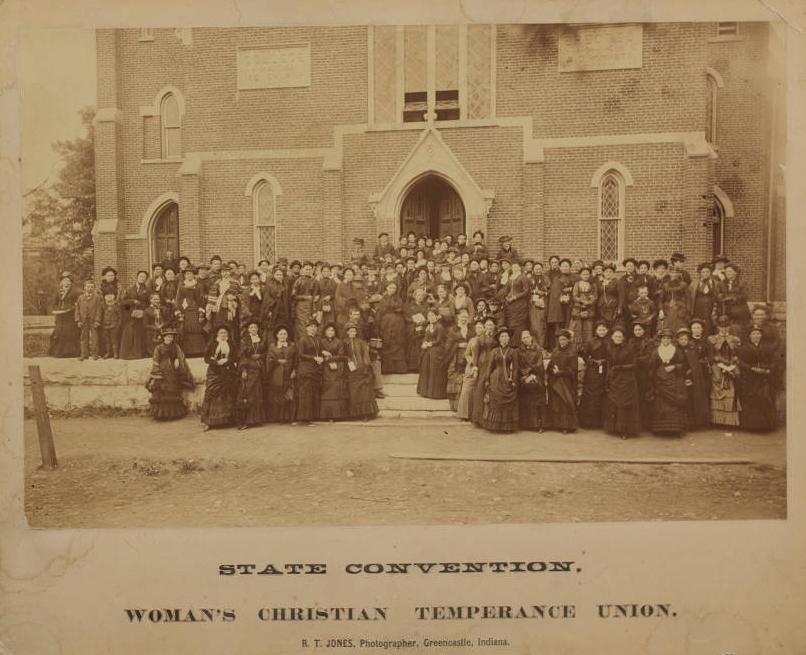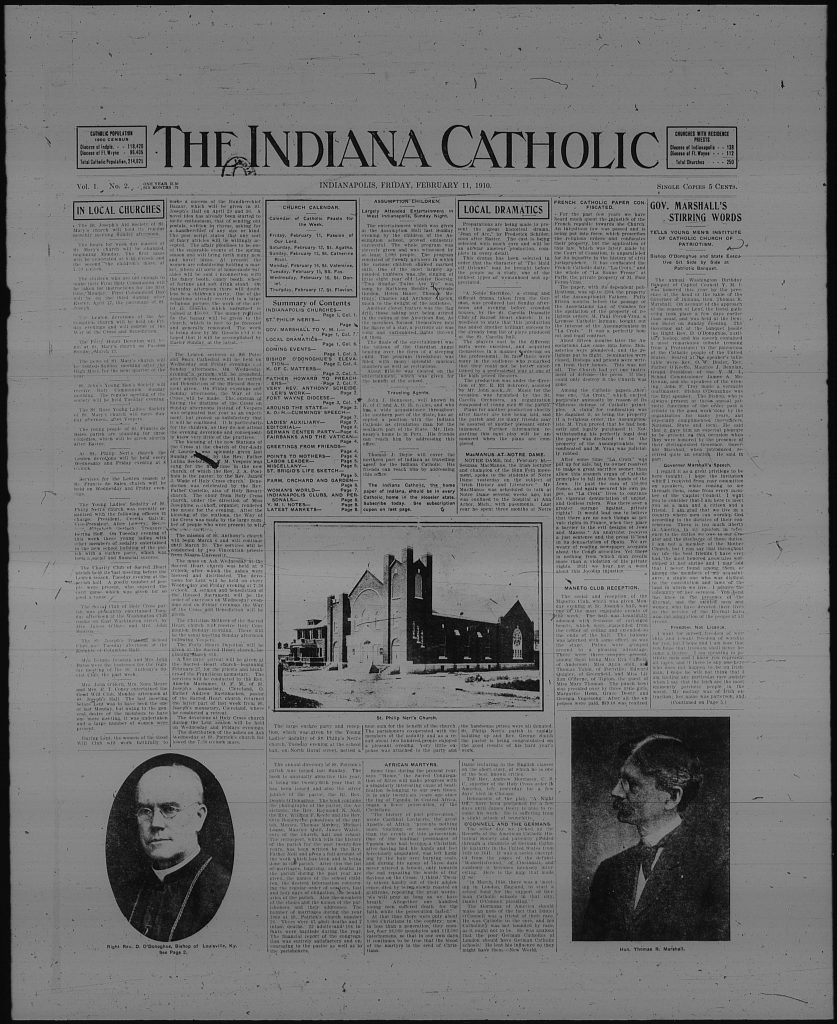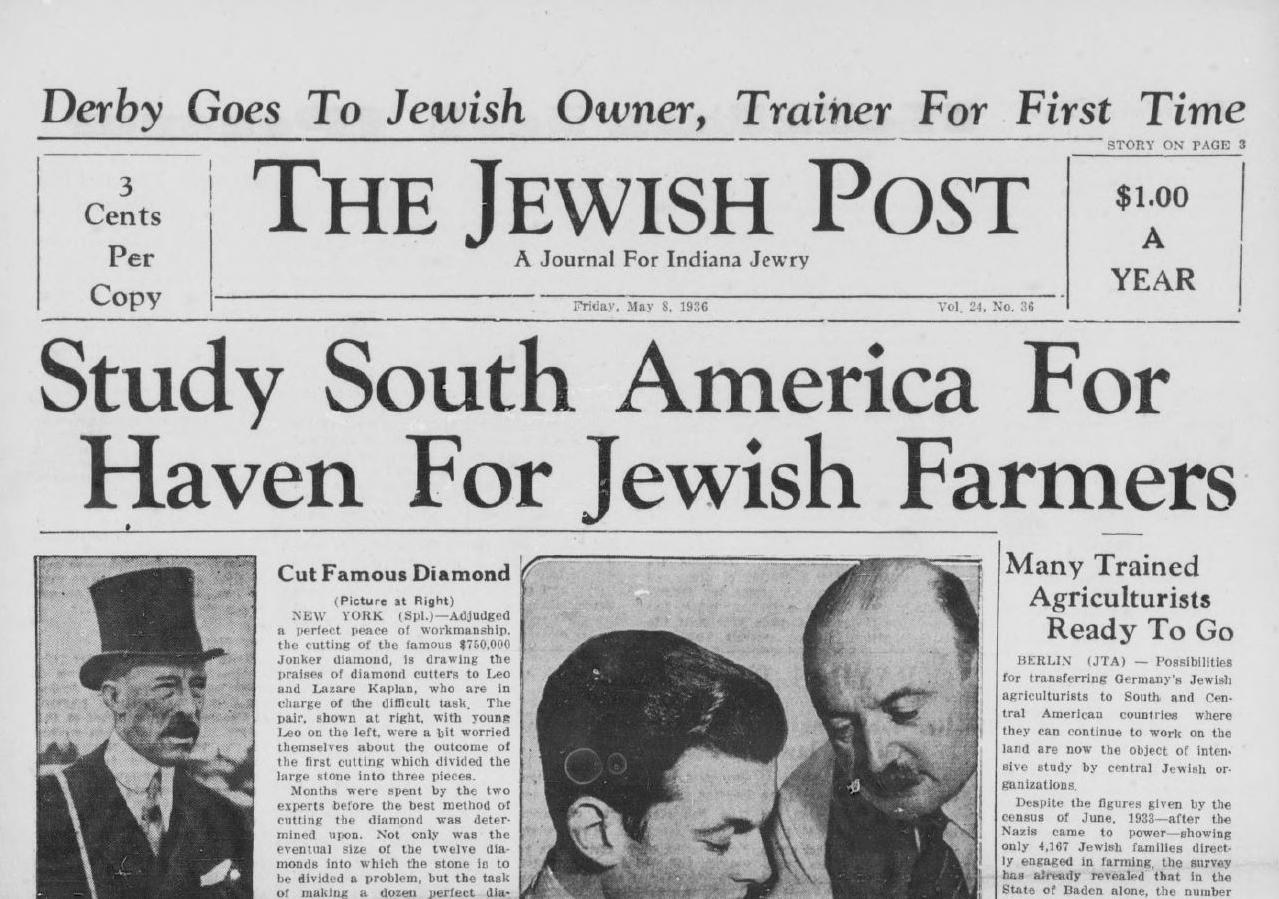The growth of Indianapolis during the mid-19th century led to the establishment of a thriving newspaper industry in the Hoosier capital. The portability of movable type systems and the increased literacy among the Indiana population made it possible for religious congregations to publish weekly and monthly broadsheet newspapers after about 1850. Most early religious newspapers calling Indianapolis home were published in southern Indiana and later moved to the growing capital city.
Perhaps the first such publication to issue from Indianapolis was the , which was moved up the from Madison in Jefferson County to Indianapolis in October 1846, by the Reverend E. D. Owens. Elder Elijah Goodwin of the Christian Church moved the from Bloomington in 1850 and published the newspaper monthly until the beginning of the , when it became a weekly. In 1866 the newspaper moved to Cincinnati and merged with the .
Another newspaper that moved from Madison to Indianapolis was the . The Reverend B. F. Foster moved the newspaper to Indianapolis in late 1853, but its stay was short. In 1855 it was combined with the of St. Louis, Missouri. Until the renamed was discontinued in the early 1860s, the newspaper was published by Isaac D. Williamson, T. C. Eaton, Thomas Abbott, and Mandeville G. Lee in St. Louis and Indianapolis. Other early examples of religious publications in Indianapolis Include the Reverend Erasmus Manford’s from 1855 to 1857, and Dr. M. G. Clarke’s Witness as a religious and family publication in 1857. The latter was discontinued in 1864.
The advent of the Sunday school movement during the 1860s and 1870s led to the establishment of several weekly and monthly newspapers aimed at Christian youth. Combining sermons with puzzles, games, and instructional serials, the Sunday school newspapers enjoyed popularity during the latter third of the 19th century. The , of which relatively little is known, was first published in 1860. It was superseded by the , which was begun in 1865 as a monthly Sunday school newspaper for the Christian Church. The publication’s frequency changed to bimonthly in 1866; it appeared weekly after 1869. Difficult financial circumstances forced the church to cut the frequency back to monthly in the early 1870s, and in 1884 the publication changed its name to the . The publication went through one more name change, to the , before it was discontinued before the turn of the century.
Reverend W. W. Dowling of the Christian Church published the as a Sunday school newspaper in 1870. The newspaper was soon discontinued, but Dowling tried again in 1877 when he started the short-lived . In 1891 Dowling purchased the and renamed it the . Like its earlier namesake, the newspaper had a brief existence.
Much of the impetus for 19th-century religious publishing in Indiana originated from the movement. Closely identified with progressive Protestantism, the temperance movement spawned a host of religious temperance newspapers in Indianapolis. In 1848 B. T. Kavanaugh and started the weekly temperance newspaper, the Family Visitor published until 1850. The Temperance Chart succeeded it and then the (1853) before it passed from the Indianapolis scene. The Reverend Thomas Goodwin and W. H. Ongley started the which espoused temperance and women’s suffrage in April 1871, though it folded in 1872, The Methodist Episcopal Church published the newspaper which Goodwin reestablished under the same name in 1886. The Advocate Publishing Company published a weekly version of the second iteration of the which lasted until 1890.

The temperance issue was of particular importance to quasi-religious organizations like the (WCTU). Sarah E. Underhill published the , a short-lived temperance weekly unaffiliated with any Indianapolis congregations in 1857. Lodie E. Reed and Mollie G. Hoy started the to support the temperance movement about 1882; for the last two decades of the 19th century, the newspaper was the weekly organ of the Indiana WCTU.
Indianapolis women founded and operated the , the official organ of the Christian Woman’s Board of Missions in 1883. S. E. Shortridge edited the newspaper from 1883 to 1890. Other editors included Helen E. Moses, Anna R. Atwater, and Effie L. Cunningham.
The , an Indianapolis newspaper published for Indiana members of the , formed from a merger between the and the in the spring of 1887. Daniel Sommer owned and operated the weekly Mormon newspaper until it halted publication in 1918. After 1917, Sommer, his wife, and sons published the , a weekly newspaper for members of the Church of Christ.
Indiana got their weekly newspaper in 1880 when the Reverend G. H. Elgin and his brother-in-law, U. M. Choille, began publishing the for the Central Baptist Publishing Company. Central Baptist Press had published an earlier newspaper, the , which appeared periodically and lasted from 1875 until 1879. In 1881 the changed its name to the , and Elgin and Choille operated the newspaper until Elgin left the venture in the late 1880s. Choille sold the weekly to the Indiana Baptist Publishing Company in 1891, which named C. M. Carter the new editor. C. E. W. Dobbs became the editor in 1894, and the name of the publication was changed to the at the turn of the century. The newspaper ceased publication two years later.
The influx of and immigrants to Indiana following the Revolution of 1848 and the Irish potato famine in the mid-19th century laid the seeds for a thriving Catholic press in Indianapolis. The earliest Catholic newspapers in the Hoosier capital were printed for ethnic , rather than for the whole Catholic community. Although not strictly a religious newspaper, the attempted to reach the city’s Irish Catholic community and contained much news of Irish spiritual life, including the activities of Irish priests and reports of baptisms, weddings, and funerals in the Irish community. Joseph Marshall and C. E. McSheehy started the paper in 1876. Thomas McSheehy owned and edited it when it folded in 1883. The German language weekly, Die Glocke served the city’s German Catholics from 1862 to 1905. William Kuhlman, Father Carl Kuhlman, and Arthur Preuss founded the weekly Catholic publication in 1882. moved to Chicago around 1905. Father , a noted pastor among the Italian Catholics living in near southside neighborhoods, published the , a weekly—and later a monthly— magazine for Italian Catholics during .

The roots of , the weekly newspaper of the Indianapolis Catholic Archdiocese, go back to the formation of the New Record, a weekly Catholic newspaper that Richard Outler started in 1883. Alexander Chomel started the in 1889 as a continuation of the which merged into the Catholic Columbian of Columbus, Ohio, in 1899 to form the Catholic Columbian-Record. The newspaper published editions in Columbus and Indianapolis. In 1910 Joseph P. O’Mahony of the Indiana Catholic Printing and Publishing Company began publication of the Indiana Catholic, which absorbed the Catholic Columbian-Record in 1915. O’Mahony edited the merged until the 1940s when Monsignor Raymond T. Bolser succeeded him as editor. Bosler remained editor in 1960 when the Indianapolis Archdiocese bought control of the weekly newspaper and renamed it the .
The rise of fundamentalism during the first decade of the 20th century spawned several Indianapolis religious newspapers. The was started about 1900 as a religious and temperance weekly for the Pentecost Bands of the World. Flora B. Nelson assumed editorship of the paper in 1903 when it was renamed the . The newspaper continued in circulation until 1913. Other short-lived religious newspapers of the period included the (early 1890s) and the (1909). Pilgrim Publishing House started a religious weekly in 1956 called the . Paul W. Thomas and A. D. Peiskar served as editors, which increased its frequency to twice weekly in 1965 before closing its doors in 1968.
Several publications have served Indianapolis’ since the 1920s. Nathan J. Gould began publishing the Indiana Jewish Chronicle in July 1921. Rabbi Jacob Bienefeld (1922-1923) and Morris Strauss (1923-1969) succeeded Gould as editor. Mary L. Morey replaced Strauss as editor and publisher from 1969 until the paper’s demise in the early 1970s. Aaron M. Neustadt edited a short-lived competing newspaper, the in the early 1930s. The existed from 1944 to approximately 1958.

The longest-lasting Jewish newspaper in the city is the . Still in existence, Leonard Rothschild started the newspaper as the in the spring of 1933. Originally a monthly Jewish community newspaper, the Jewish Post changed to a twice-monthly publication in 1934 and went weekly in March 1935. Rothschild sold his interest to Gabriel M. Cohen of the Spokesman Company at the end of 1935. Cohen changed the name of the weekly to the in 1946 and the in 1947. Cohen changed the name again to the in 1966. The newspaper continues to publish in 1994 as the .
*Note: This entry is from the original print edition of the Encyclopedia of Indianapolis (1994). We seek an individual with knowledge of this topic to update this entry.

Help improve this entry
Contribute information, offer corrections, suggest images.
You can also recommend new entries related to this topic.
